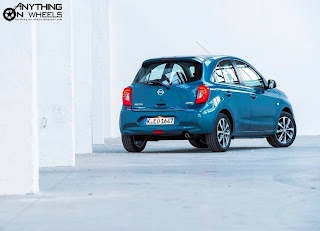The big news doing rounds in all automotive websites and blogs over the last few days is the Ambassador (fondly called the 'Amby') being chosen as the world's best taxi by Top Gear, arguably the most popular automotive show on earth that airs on BBC. Famous for their fun-filled, straight-from-the-heart views on cars, the show and its three hosts are so popular that this announcement has given excellent worldwide publicity to the car that literally put India on wheels for more than half a century.
Considering the experiments performed by Top Gear in the past, we all know that the show is pure entertainment for automobile-lovers and the verdicts are to be taken with a spoon of salt. Even then, why aren't we surprised by this verdict then?
It's because we were brought up by a generation that grew up seeing, traveling and dreaming about the Hindustan Ambassador. In those days, choices were strictly limited and life in general was a whole lot simpler. You have got to be either an Ambassador loyalist or a hard-core Fiat fan (That's how the Premier Padmini was called). The Ambassador's victory starts right from that statement. While the Premier Padmini was not able to shake off its origins and was popular as a Fiat, the Ambassador totally overshadowed the Morris Oxford, the British car in which it was based on. The Ambassador had, and still has, such a patriotic influence that its hard to convince many of our countrymen that the Ambassador isn't an Indian car after all.
Considering the experiments performed by Top Gear in the past, we all know that the show is pure entertainment for automobile-lovers and the verdicts are to be taken with a spoon of salt. Even then, why aren't we surprised by this verdict then?
It's because we were brought up by a generation that grew up seeing, traveling and dreaming about the Hindustan Ambassador. In those days, choices were strictly limited and life in general was a whole lot simpler. You have got to be either an Ambassador loyalist or a hard-core Fiat fan (That's how the Premier Padmini was called). The Ambassador's victory starts right from that statement. While the Premier Padmini was not able to shake off its origins and was popular as a Fiat, the Ambassador totally overshadowed the Morris Oxford, the British car in which it was based on. The Ambassador had, and still has, such a patriotic influence that its hard to convince many of our countrymen that the Ambassador isn't an Indian car after all.
Who cares though? Its origins might be British, but it was India and the Indians that celebrated the car, treated it as part of their families and gave the Ambassador an iconic and cult status. From being used to transport the visiting foreign diplomats in bullet-proof safety to being left unattended to rust in peace, the Ambassador has seen it all and continues to play an integral part in Indian roads, albeit in a much-less significant way.
The first thing that strikes your mind when you think of an Ambassador is its 'taxi' legacy. For decades, the Amby has been performing the duty of ferrying people and luggage across Indian cities, over broken bridges and unmanned level crossings and through streams and rivers. In all these years of service in India, the Ambassador would have even tackled terrains that would wreak havoc with modern cars. It's big footprint meant that passengers can walk into the car, rather than bending and flexing themselves in. The space and comfort offered by the sofa-life rear bench in the Ambassador is legendary and the ability to squeeze in as much people inside as possible is unmatched to this day. The leaf springs at the rear quite literally gobbles up potholes and pampers the occupants with supreme ride comfort, irrespective of the road conditions. In case things go wrong, every roadside mechanic you spot would have his own fix for getting the Ambassador up and running again.
Agreed, the car takes ages to gain speed, the brakes need more than the weight of two feet to show that its working and turning the non power-steering equipped variants is a royal pain. But, those are for the drivers to worry about. As long as you are a passenger, all you do is sit, relax and enjoy the enchanting views on offer in those large windows. And that's what taxis are intended for, mind it. In that sense, there is nothing quite to match, let alone beat, the coveted Amby of India. Well, all the Ford Crown Victorias and the TX4 Black Cabs of the world, move over please! Let the King march on.























